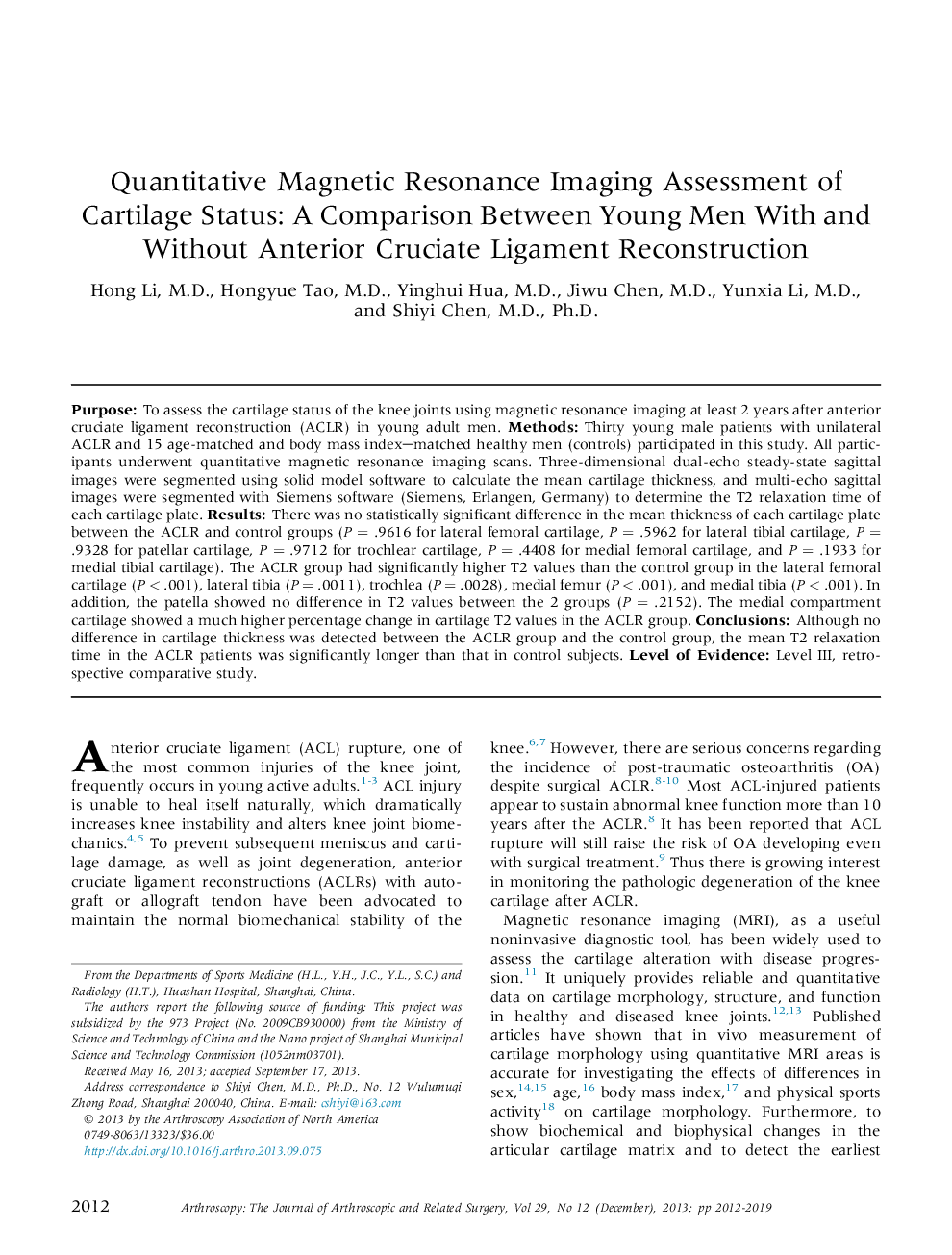| کد مقاله | کد نشریه | سال انتشار | مقاله انگلیسی | نسخه تمام متن |
|---|---|---|---|---|
| 4043178 | 1603502 | 2012 | 8 صفحه PDF | دانلود رایگان |

PurposeTo assess the cartilage status of the knee joints using magnetic resonance imaging at least 2 years after anterior cruciate ligament reconstruction (ACLR) in young adult men.MethodsThirty young male patients with unilateral ACLR and 15 age-matched and body mass index–matched healthy men (controls) participated in this study. All participants underwent quantitative magnetic resonance imaging scans. Three-dimensional dual-echo steady-state sagittal images were segmented using solid model software to calculate the mean cartilage thickness, and multi-echo sagittal images were segmented with Siemens software (Siemens, Erlangen, Germany) to determine the T2 relaxation time of each cartilage plate.ResultsThere was no statistically significant difference in the mean thickness of each cartilage plate between the ACLR and control groups (P = .9616 for lateral femoral cartilage, P = .5962 for lateral tibial cartilage, P = .9328 for patellar cartilage, P = .9712 for trochlear cartilage, P = .4408 for medial femoral cartilage, and P = .1933 for medial tibial cartilage). The ACLR group had significantly higher T2 values than the control group in the lateral femoral cartilage (P < .001), lateral tibia (P = .0011), trochlea (P = .0028), medial femur (P < .001), and medial tibia (P < .001). In addition, the patella showed no difference in T2 values between the 2 groups (P = .2152). The medial compartment cartilage showed a much higher percentage change in cartilage T2 values in the ACLR group.ConclusionsAlthough no difference in cartilage thickness was detected between the ACLR group and the control group, the mean T2 relaxation time in the ACLR patients was significantly longer than that in control subjects.Level of EvidenceLevel III, retrospective comparative study.
Journal: Arthroscopy: The Journal of Arthroscopic & Related Surgery - Volume 29, Issue 12, December 2013, Pages 2012–2019